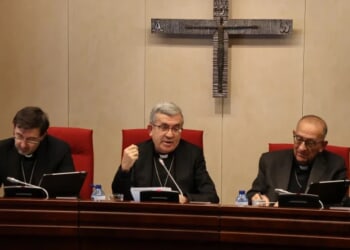Kyiv’s military is now operating in the Russian Belgorod Oblast; despite this, Russia refused America’s proposed thirty-day ceasefire.
Even as Ukraine’s forces have been slowly but steadily driven back in the Russian Oblast of Kursk, Ukrainian President Volodymyr Zelensky said in his address on Monday evening that Kyiv’s military is now operating in the Russian Belgorod Oblast.
Ukraine’s invasion of Kursk last August was the first time Russia had faced a large-scale military invasion since the Second World War, while raids had been previously conducted into the Belgorod region.
“We continue to carry out active operations in the border areas on enemy territory, and that is just, war must return to where it came from,” Zelensky explained in the video address, which was posted on X.
“The main objective remains the same: to protect our land and communities in the Sumy and Kharkiv regions as much as possible from the Russian occupiers.”
Zelensky’s comments came following a briefing with the Commander-in-Chief of the Ukrainian Armed Forces, Oleksandr Syrkyi.
“The commander-in-chief reported on the activity of our units along the borderline, in the so-called “gray zone,” and directly on enemy territory,” Zelensky added, noting that the 225th Assault Regiment had been engaged in operations in the Belgorod Oblast for at least several days. That has helped “ease the pressure” on the other parts of the front line, notably in the Donetsk region of eastern Ukraine.
Ukraine’s Belgorod Incursion Is Minor but Still Significant
Russian military bloggers were the first to report that Ukrainian troops had crossed into the region and deployed scores of drones. According to one of Russia’s most prominent military bloggers, Filatov, Kyiv has employed hundreds of first-person view (FPV) drones in the Belgorod Oblast, and the Russian military has been slow to respond in kind.
“Our situation is quite different,” Filatov acknowledged in a post on the Telegram social messaging app last month. He noted “[an] acute shortage of FPVs” and warned that there has been “chaos” within Russia’s military command on the scene.
“As you move closer to the front, chaos ensues: random landmines, no understanding of “who’s who and what’s he doing here,” the skies being controlled by the adversary, and many illogical occurrences. Traveling on roads feels like playing a dangerous game of Russian roulette,” Filatov continued.
Though Ukraine attempted a fresh offensive into the Kursk Oblast earlier this year, Kyiv has continued to give ground. Moscow’s goal may be to drive out any invading forces before serious peace talks ultimately.
In response, Ukraine has launched a smaller-scale incursion into the Belgorod region.
“Ukraine could also be hoping to exchange the Russian areas it holds for parts of Ukrainian regions occupied by Moscow in any future peace negotiations pushed for by the United States,” the BBC reported.
“Several war analysts, both in Ukraine and the West, have questioned the military expedience of Kyiv’s operations on Russian soil, pointing to reported high combat casualties and weapons supply difficulties.”
American Offer of Spring Ceasefire Rejected
U.S. president Donald Trump called again for a ceasefire in the ongoing conflict, but he has expressed frustration that Russia has continued to bomb targets in Ukraine.
“We are talking to Russia. We would like them to stop,” Trump told reporters while onboard Air Force One.
“I don’t like the bombing; the bombing goes on and on, and every week, thousands of young people are being killed.”
Last month, Kyiv agreed to the U.S.-proposed complete thirty-day ceasefire, but Russia has refused.
“Putin does not want to end the war; he is looking for ways to preserve the option of reigniting it at any moment, with even greater force,” Zelensky said in an earlier address from April 6.
“That’s exactly why all forms of pressure on Russia must continue: strengthening our ability to defend ourselves, maintaining sanctions, and ensuring that diplomacy, any conversation with Moscow, leaves them no opportunity to kill.”
The incursion into Belgorod, albeit small in scale, may change minds in the Kremlin.
About the Author: Peter Suciu
Peter Suciu is a Michigan-based writer. He has contributed to more than four dozen magazines, newspapers, and websites with over 3,200 published pieces over a twenty-year career in journalism. He regularly writes about military hardware, firearms history, cybersecurity, politics, and international affairs. Peter is also a Contributing Writer for Forbes and Clearance Jobs. You can follow him on Twitter: @PeterSuciu. You can email the author: [email protected].
Image: Shutterstock/ Oleh Dubyna.


















